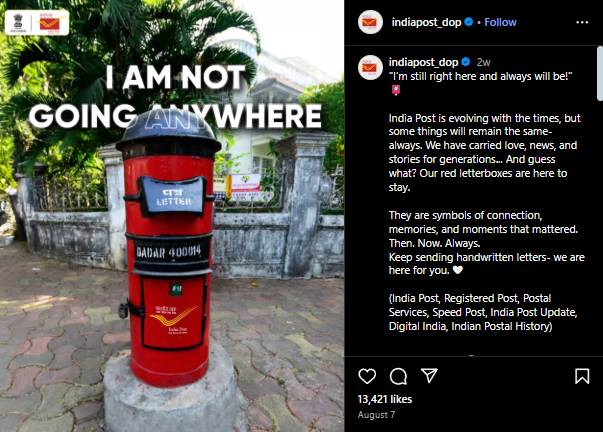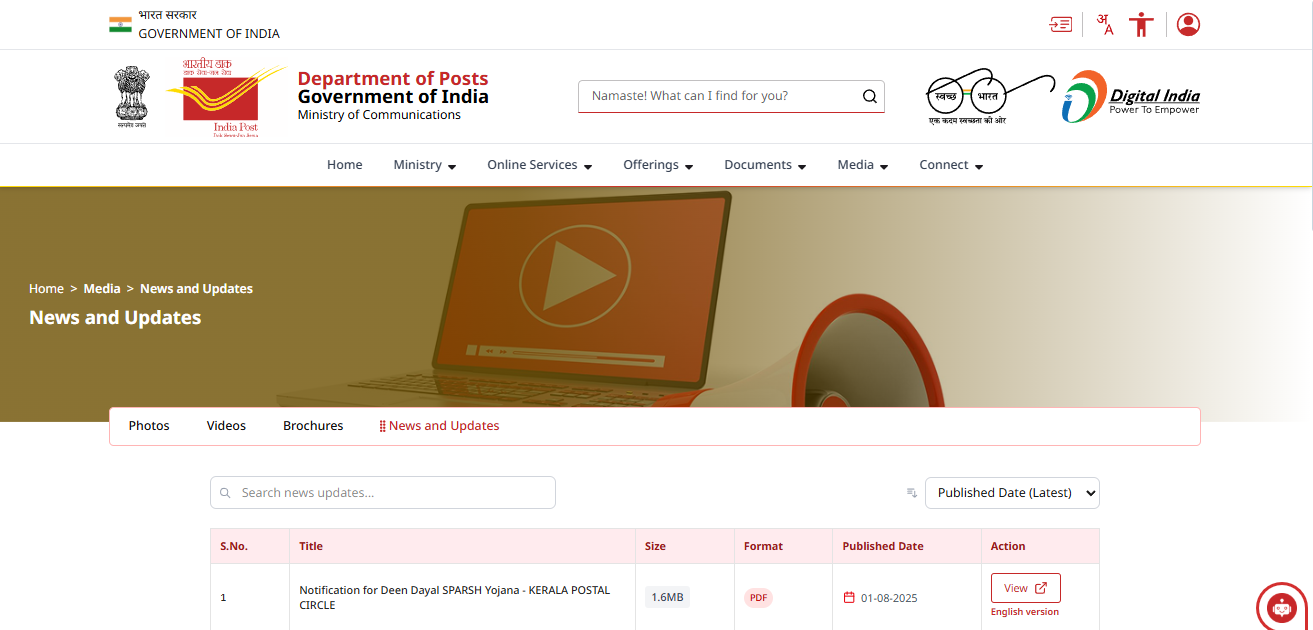#FactCheck - Manipulated Image Alleging Disrespect Towards PM Circulates Online
Executive Summary:
A manipulated image showing someone making an offensive gesture towards Prime Minister Narendra Modi is circulating on social media. However, the original photo does not display any such behavior towards the Prime Minister. The CyberPeace Research Team conducted an analysis and found that the genuine image was published in a Hindustan Times article in May 2019, where no rude gesture was visible. A comparison of the viral and authentic images clearly shows the manipulation. Moreover, The Hitavada also published the same image in 2019. Further investigation revealed that ABPLive also had the image.

Claims:
A picture showing an individual making a derogatory gesture towards Prime Minister Narendra Modi is being widely shared across social media platforms.



Fact Check:
Upon receiving the news, we immediately ran a reverse search of the image and found an article by Hindustan Times, where a similar photo was posted but there was no sign of such obscene gestures shown towards PM Modi.

ABP Live and The Hitavada also have the same image published on their website in May 2019.


Comparing both the viral photo and the photo found on official news websites, we found that almost everything resembles each other except the derogatory sign claimed in the viral image.

With this, we have found that someone took the original image, published in May 2019, and edited it with a disrespectful hand gesture, and which has recently gone viral across social media and has no connection with reality.
Conclusion:
In conclusion, a manipulated picture circulating online showing someone making a rude gesture towards Prime Minister Narendra Modi has been debunked by the Cyberpeace Research team. The viral image is just an edited version of the original image published in 2019. This demonstrates the need for all social media users to check/ verify the information and facts before sharing, to prevent the spread of fake content. Hence the viral image is fake and Misleading.
- Claim: A picture shows someone making a rude gesture towards Prime Minister Narendra Modi
- Claimed on: X, Instagram
- Fact Check: Fake & Misleading
Related Blogs

Executive Summary:
A viral social media claim suggested that India Post would discontinue all red post boxes across the country from 1 September 2025, attributing the move to the government’s Digital India initiative. However, fact-checking revealed this claim to be false. India Post’s official X (formerly Twitter) and Instagram handles clarified on 7 August 2025 that red letterboxes remain operational, calling them timeless symbols of connection and memories. No official notice or notification regarding their discontinuation exists on the Department of Posts’ website. This indicates the viral posts were misleading and aimed at creating confusion among the public.
Claim:
A claim is circulating on social media stating that India Post will discontinue all red post boxes across the country effective 1 September 2025. According to the viral posts,[archived link] the move is being linked to the government’s push towards Digital India, suggesting that traditional post boxes have lost their relevance in the digital era.

Fact Check:
After conducting a reverse image analysis, we found that the official X handle of India Post, in a post dated 7 August 2025, clarified that the viral claim was incorrect and misleading. The post was shared with the caption:
I’m still right here and always will be!"
India Post is evolving with the times, but some things will remain the same- always. We have carried love, news, and stories for generations... And guess what? Our red letterboxes are here to stay.
They are symbols of connection, memories, and moments that mattered. Then. Now. Always.
Keep sending handwritten letters- we are here for you.
This directly refutes the viral claim about the discontinuation of the red post box from 1 September 2025. A similar clarification was also posted on the official Instagram handle @indiapost_dop on the same date.


Furthermore, after thoroughly reviewing the official website of the Department of Posts, Government of India, we found absolutely no trace, notice, or even the slightest mention of any plan to discontinue the iconic red post boxes. This complete absence of official communication strongly reinforces the fact that the viral claim is nothing more than a baseless and misleading rumour.

Conclusion:
The claim about the discontinuation of red post boxes from 1 September 2025 is false and misleading. India Post has officially confirmed that the iconic red letterboxes will continue to function as before and remain an integral part of India’s postal services.
- Claim: A viral claim suggests that India Post will remove all red letter boxes across the country beginning 1 September 2025.
- Claimed On: Social Media
- Fact Check: False and Misleading
.webp)
What is Deepfake
Deepfakes have been, a fascinating but unsettling phenomenon that is now prominent in this digital age. These incredibly convincing films have drawn attention and blended in well with our high-tech surroundings. The lifelike but completely manufactured quality of deepfake videos has become an essential component of our digital environment as we traverse the broad reaches of our digital society. While these works have an undoubtedly captivating charm, they have important ramifications. Come along as we examine the deep effects that misuse of deepfakes can have on our globalized digital culture. After many actors now business tycoon Ratan Tata has become the latest victim of deepfake. Tata called out a post from a user that used a fake interview of him in a video recommending Investments.
Case Study
The nuisance of deep fake is sparing none from actors politicians to entrepreneurs everyone is getting caught in the Trap. Soon after the actresses Rashmika Mandana, Katrina Kaif, Kajol and other actresses fell prey to the rising scenario of deepfake, a new case from the industry emerged, which took Mr. Ratan Tata on storm. Business tycoon Ratan Tata has become the latest victim of deepfake. He took to his social media sharing an image of the interview that asked people to invest money in a project in a post on Instagram. Ratan Tata called out a post from a user that used a fake interview of him in a video recommending these Investments.
This nuisance that has been created because of the deepfake is sparing nobody from actors to politicians to entrepreneurs now everyone is getting caught in the trap the latest victim being Ratan Tata. Tech magnate Ratan Tata is the most recent victim of this deepfake phenomenon. The millionaire was seen in the video, which was posted by the Instagram user, giving his followers a once-in-a-million opportunity to "exaggerate investments risk-free."
In the stated video, Ratan Tata was seen giving everyone in India advice mentioning to the public regarding the opportunity to increase their money with no risk and a 100% guarantee. The caption of the video clip stated, "Go to the channel right now."
Tata annotated both the video and the screenshot of the caption with the word "FAKE."
Ongoing Deepfake Assaults in India
Deepfake videos continue to target celebrities, and Priyanka Chopra is also a recent victim of this unsettling trend. Priyanka's deepfake adopts a different strategy than other examples, including actresses like Rashmika Mandanna, Katrina Kaif, Kajol, and Alia Bhatt. Rather than editing her face in contentious situations, the misleading film keeps her looking the same but modifies her voice and replaces real interview quotes with made-up commercial phrases. The deceptive video shows Priyanka promoting a product and talking about her yearly salary, highlighting the worrying development of deepfake technology and its possible effects on prominent personalities.
Prevention and Detection
In order to effectively combat the growing threat posed by deepfake technology, people and institutions should place a high priority on developing critical thinking abilities, carefully examining visual and auditory cues for discrepancies, making use of tools like reverse image searches, keeping up with the latest developments in deepfake trends, and rigorously fact-check reputable media sources. Important actions to improve resistance against deepfake threats include putting in place strong security policies, integrating cutting-edge deepfake detection technologies, supporting the development of ethical AI, and encouraging candid communication and cooperation. We can all work together to effectively and mindfully manage the problems presented by deepfake technology by combining these tactics and making adjustments to the constantly changing terrain.
Conclusion
The current instance involving Ratan Tata serves as an example of how the emergence of counterfeit technology poses an imminent danger to our digital civilization. The fake video, which was posted to Instagram, showed the business tycoon giving financial advice and luring followers with low-risk investment options. Tata quickly called out the footage as "FAKE," highlighting the need for careful media consumption. The Tata incident serves as a reminder of the possible damage deepfakes can do to prominent people's reputations. The issue, in Ratan Tata's instance specifically, demands that public personalities be more mindful of the possible misuse of their virtual identities. We can all work together to strengthen our defenses against this sneaky phenomenon and maintain the trustworthiness of our internet-based culture in the face of ever-changing technological challenges by emphasizing preventive measures like strict safety regulations and the implementation of state-of-the-art deepfake detection technologies.
References
- https://economictimes.indiatimes.com/magazines/panache/ratan-tata-slams-deepfake-video-that-features-him-giving-risk-free-investment-advice/articleshow/105805223.cms
- https://www.ndtv.com/india-news/ratan-tata-flags-deepfake-video-of-his-interview-recommending-investments-4640515
- https://www.businesstoday.in/bt-tv/short-video/viralvideo-business-tycoon-ratan-tata-falls-victim-to-deepfake-408557-2023-12-07
- https://www.livemint.com/news/india/false-ratan-tata-calls-out-a-deepfake-video-of-him-giving-investment-advice-11701926766285.html

Introduction
The term ‘super spreader’ is used to refer to social media and digital platform accounts that are able to quickly transmit information to a significantly large audience base in a short duration. The analogy references the medical term, where a small group of individuals is able to rapidly amplify the spread of an infection across a huge population. The fact that a few handful accounts are able to impact and influence many is attributed to a number of factors like large follower bases, high engagement rates, content attractiveness or virality and perceived credibility.
Super spreader accounts have become a considerable threat on social media because they are responsible for generating a large amount of low-credibility material online. These individuals or groups may create or disseminate low-credibility content for a number of reasons, running from social media fame to garnering political influence, from intentionally spreading propaganda to seeking financial gains. Given the exponential reach of these accounts, identifying, tracing and categorising such accounts as the sources of misinformation can be tricky. It can be equally difficult to actually recognise the content they spread for the misinformation that it actually is.
How Do A Few Accounts Spark Widespread Misinformation?
Recent research suggests that misinformation superspreaders, who consistently distribute low-credibility content, may be the primary cause of the issue of widespread misinformation about different topics. A study[1] by a team of social media analysts at Indiana University has found that a significant portion of tweets spreading misinformation are sent by a small percentage of a given user base. The researchers conducted a review of 2,397,388 tweets posted on Twitter (now X) that were flagged as having low credibility and details on who was sending them. The study found that it does not take a lot of influencers to sway the beliefs and opinions of large numbers. This is attributed to the impact of what they describe as superspreaders. The researchers collected 10 months of data, which added up to 2,397,388 tweets sent by 448,103 users, and then reviewed it, looking for tweets that were flagged as containing low-credibility information. They found that approximately a third of the low-credibility tweets had been posted by people using just 10 accounts, and that just 1,000 accounts were responsible for posting approximately 70% of such tweets.[2]
Case Study
- How Misinformation ‘Superspreaders’ Seed False Election Theories
During the 2020 U.S. presidential election, a small group of "repeat spreaders" aggressively pushed false election claims across various social media platforms for political gain, and this even led to rallies and radicalisation in the U.S.[3] Superspreaders accounts were responsible for disseminating a disproportionately large amount of misinformation related to the election, influencing public opinion and potentially undermining the electoral process.
In the domestic context, India was ranked highest for the risk of misinformation and disinformation according to experts surveyed for the World Economic Forum’s 2024 Global Risk Report. In today's digital age, misinformation, deep fakes, and AI-generated fakes pose a significant threat to the integrity of elections and democratic processes worldwide. With 64 countries conducting elections in 2024, the dissemination of false information carries grave implications that could influence outcomes and shape long-term socio-political landscapes. During the 2024 Indian elections, we witnessed a notable surge in deepfake videos of political personalities, raising concerns about the influence of misinformation on election outcomes.
- Role of Superspreaders During Covid-19
Clarity in public health communication is important when any grey areas or gaps in information can be manipulated so quickly. During the COVID-19 pandemic, misinformation related to the virus, vaccines, and public health measures spread rapidly on social media platforms, including Twitter (Now X). Some prominent accounts or popular pages on platforms like Facebook and Twitter(now X) were identified as superspreaders of COVID-19 misinformation, contributing to public confusion and potentially hindering efforts to combat the pandemic.
As per the Center for Countering Digital Hate Inc (US), The "disinformation dozen," a group of 12 prominent anti-vaccine accounts[4], were found to be responsible for a large amount of anti-vaccine content circulating on social media platforms, highlighting the significant role of superspreaders in influencing public perceptions and behaviours during a health crisis.
There are also incidents where users are unknowingly engaged in spreading misinformation by forwarding information or content which are not always shared by the original source but often just propagated by amplifiers, using other sources, websites, or YouTube videos that help in dissemination. The intermediary sharers amplify these messages on their pages, which is where it takes off. Hence such users do not always have to be the ones creating or deliberately popularising the misinformation, but they are the ones who expose more people to it because of their broad reach. This was observed during the pandemic when a handful of people were able to create a heavy digital impact sharing vaccine/virus-related misinformation.
- Role of Superspreaders in Influencing Investments and Finance
Misinformation and rumours in finance may have a considerable influence on stock markets, investor behaviour, and national financial stability. Individuals or accounts with huge followings or influence in the financial niche can operate as superspreaders of erroneous information, potentially leading to market manipulation, panic selling, or incorrect impressions about individual firms or investments.
Superspreaders in the finance domain can cause volatility in markets, affect investor confidence, and even trigger regulatory responses to address the spread of false information that may harm market integrity. In fact, there has been a rise in deepfake videos, and fake endorsements, with multiple social media profiles providing unsanctioned investing advice and directing followers to particular channels. This leads investors into dangerous financial decisions. The issue intensifies when scammers employ deepfake videos of notable personalities to boost their reputation and can actually shape people’s financial decisions.
Bots and Misinformation Spread on Social Media
Bots are automated accounts that are designed to execute certain activities, such as liking, sharing, or retweeting material, and they can broaden the reach of misinformation by swiftly spreading false narratives and adding to the virality of a certain piece of content. They can also artificially boost the popularity of disinformation by posting phony likes, shares, and comments, making it look more genuine and trustworthy to unsuspecting users. Bots can exploit social network algorithms by establishing false identities that interact with one another and with real users, increasing the spread of disinformation and pushing it to the top of users' feeds and search results.
Bots can use current topics or hashtags to introduce misinformation into popular conversations, allowing misleading information to acquire traction and reach a broader audience. They can lead to the construction of echo chambers, in which users are exposed to a narrow variety of perspectives and information, exacerbating the spread of disinformation inside restricted online groups. There are incidents reported where bot's were found as the sharers of content from low-credibility sources.
Bots are frequently employed as part of planned misinformation campaigns designed to propagate false information for political, ideological, or commercial gain. Bots, by automating the distribution of misleading information, can make it impossible to trace the misinformation back to its source. Understanding how bots work and their influence on information ecosystems is critical for combatting disinformation and increasing digital literacy among social media users.
CyberPeace Policy Recommendations
- Recommendations/Advisory for Netizens:
- Educating oneself: Netizens need to stay informed about current events, reliable fact-checking sources, misinformation counter-strategies, and common misinformation tactics, so that they can verify potentially problematic content before sharing.
- Recognising the threats and vulnerabilities: It is important for netizens to understand the consequences of spreading or consuming inaccurate information, fake news, or misinformation. Netizens must be cautious of sensationalised content spreading on social media as it might attempt to provoke strong reactions or to mold public opinions. Netizens must consider questioning the credibility of information, verifying its sources, and developing cognitive skills to identify low-credibility content and counter misinformation.
- Practice caution and skepticism: Netizens are advised to develop a healthy skepticism towards online information, and critically analyse the veracity of all information sources. Before spreading any strong opinions or claims, one must seek supporting evidence, factual data, and expert opinions, and verify and validate claims with reliable sources or fact-checking entities.
- Good netiquette on the Internet, thinking before forwarding any information: It is important for netizens to practice good netiquette in the online information landscape. One must exercise caution while sharing any information, especially if the information seems incorrect, unverified or controversial. It's important to critically examine facts and recognise and understand the implications of sharing false, manipulative, misleading or fake information/content. Netizens must also promote critical thinking and encourage their loved ones to think critically, verify information, seek reliable sources and counter misinformation.
- Adopting and promoting Prebunking and Debunking strategies: Prebunking and debunking are two effective strategies to counter misinformation. Netizens are advised to engage in sharing only accurate information and do fact-checking to debunk any misinformation. They can rely on reputable fact-checking experts/entities who are regularly engaged in producing prebunking and debunking reports and material. Netizens are further advised to familiarise themselves with fact-checking websites, and resources and verify the information.
- Recommendations for tech/social media platforms
- Detect, report and block malicious accounts: Tech/social media platforms must implement strict user authentication mechanisms to verify account holders' identities to minimise the formation of fraudulent or malicious accounts. This is imperative to weed out suspicious social media accounts, misinformation superspreader accounts and bots accounts. Platforms must be capable of analysing public content, especially viral or suspicious content to ascertain whether it is misleading, AI-generated, fake or deliberately misleading. Upon detection, platform operators must block malicious/ superspreader accounts. The same approach must apply to other community guidelines’ violations as well.
- Algorithm Improvements: Tech/social media platform operators must develop and deploy advanced algorithm mechanisms to detect suspicious accounts and recognise repetitive posting of misinformation. They can utilise advanced algorithms to identify such patterns and flag any misleading, inaccurate, or fake information.
- Dedicated Reporting Tools: It is important for the tech/social media platforms to adopt robust policies to take action against social media accounts engaged in malicious activities such as spreading misinformation, disinformation, and propaganda. They must empower users on the platforms to flag/report suspicious accounts, and misleading content or misinformation through user-friendly reporting tools.
- Holistic Approach: The battle against online mis/disinformation necessitates a thorough examination of the processes through which it spreads. This involves investing in information literacy education, modifying algorithms to provide exposure to varied viewpoints, and working on detecting malevolent bots that spread misleading information. Social media sites can employ similar algorithms internally to eliminate accounts that appear to be bots. All stakeholders must encourage digital literacy efforts that enable consumers to critically analyse information, verify sources, and report suspect content. Implementing prebunking and debunking strategies. These efforts can be further supported by collaboration with relevant entities such as cybersecurity experts, fact-checking entities, researchers, policy analysts and the government to combat the misinformation warfare on the Internet.
References:
- https://journals.plos.org/plosone/article?id=10.1371/journal.pone.0302201 {1}
- https://phys.org/news/2024-05-superspreaders-responsible-large-portion-misinformation.html#google_vignette {2}
- https://phys.org/news/2024-05-superspreaders-responsible-large-portion-misinformation.html#google_vignette {3}
- https://counterhate.com/research/the-disinformation-dozen/ {4}
- https://phys.org/news/2024-05-superspreaders-responsible-large-portion-misinformation.html#google_vignette
- https://journals.plos.org/plosone/article?id=10.1371/journal.pone.0302201
- https://www.nytimes.com/2020/11/23/technology/election-misinformation-facebook-twitter.html
- https://www.wbur.org/onpoint/2021/08/06/vaccine-misinformation-and-a-look-inside-the-disinformation-dozen
- https://healthfeedback.org/misinformation-superspreaders-thriving-on-musk-owned-twitter/
- https://www.ncbi.nlm.nih.gov/pmc/articles/PMC8139392/
- https://www.jmir.org/2021/5/e26933/
- https://www.yahoo.com/news/7-ways-avoid-becoming-misinformation-121939834.html


